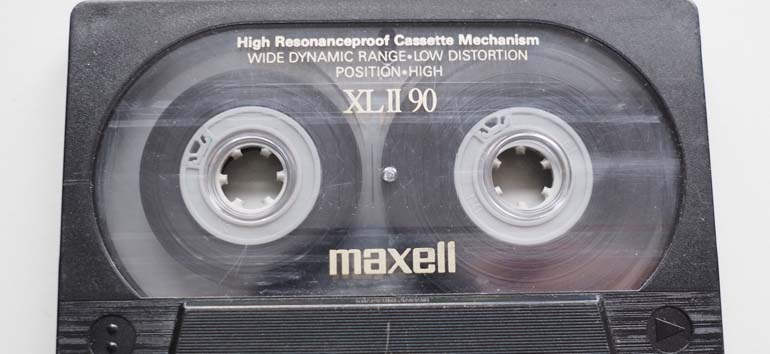Sign up for the Family Tree Newsletter! Plus, you’ll receive our 10 Essential Genealogy Research Forms PDF as a special thank you.
Get Your Free Genealogy Forms
"*" indicates required fields
In a perfect world, your genealogical research would take after the Energizer bunny—you’d cheerfully march along, adding generations and making new discoveries with every beat of the drum.
Your reality, however, probably isn’t a never-ending parade of pedigree progress. More likely, you have at least one family line that, instead of marching on and on like that motorized rabbit, smacks into a wall and gets stuck there until the batteries die.
We’re talking about the dreaded genealogical “brick wall,” of course—one of those seemingly unsolvable research problems even the Energizer bunny couldn’t outlast. The good news is you’re not truly at a brick wall until you’ve looked at every possible record your ancestor could’ve created (and then some). That’s not the case with most family history sleuths who get stuck: They’re simply in a rut and don’t know what to do next.
Maybe your ancestral obstacle isn’t really a brick wall—perhaps your genealogical batteries just need a jump-start. Try these 12 proven methods to recharge your research, and you’ll keep going (and going, and going).
1. Find Original Records
If you’re a regular reader of Family Tree Magazine, you’ve heard us advise time and again to get the original records. Though online databases, published family histories and other researchers’ work can get your search started, taking that extra hop to the original document can really pay off.
For example, all the researchers studying one of the Abraham Riggses of Accomack County, Va., have labeled him as the second son of John Riggs. In the published record abstracts containing John Riggs’ 1766 will, he leaves his estate to his son Joseph. Thus, everyone assumes Joseph is the eldest son.
But he’s not. If you look at the original will, it says Abraham Riggs is the “heir at law”—meaning Abraham has the legal right to his father’s lands—and Abraham has no objection to the will. That’s because Abraham already had been provided for by another relative. So his dad left the estate to the second-born son.
What qualifies as an original record? It’s a document created at the time the event happened. For genealogical purposes, it doesn’t matter whether you consult the actual original document or a photocopy, microfilm or digital image of it. But you should make a habit of going beyond abstracts and transcriptions—otherwise, you could miss some small, important detail or not get the whole story.
2. Revisit Records
If you’re like most genealogists, you aren’t researching 24/7 (even though you’d like to). You do have to eat, maybe work, tend to your spouse and family, and take a vacation every now and then. This leaves you to work on your genealogy in fits and starts, concentrating more on some lines than on others, and then putting those aside on occasion to work on a different branch.
The best part of doing genealogy this way: You’re constantly learning new things because each branch of your tree is different, pushing you to explore different places and records. Plus, new resources are being posted online all the time.
So now you need to go back and review the work you did five, 10 or even 25 years ago. Could you easily get an original record now that you didn’t find before? With your new knowledge and better research skills, did you overlook something when you last checked the census? Maybe when you first retrieved that schedule 10 years ago, you didn’t know to look at the neighbors to see if relatives lived nearby. Or perhaps when you first visited the cemetery where Great-grandma’s buried, you didn’t realize that the Coffmans, whose plot is behind hers, were part of a family that married into her line. It’s truly amazing what a fresh pair of eyes will uncover, even when you thought you’d wrung a record dry the first time around.
3. Use a Checklist
Think about all the records you’ve created in your own life: birth and baptism certificates, school records, marriage licenses, house deeds, taxes, Social Security forms, passport, censuses, driver’s license and so on. This is where the “leave no stone unturned” mantra of genealogy comes into play. Just because you found Great-aunt Amelia in the 1880 census doesn’t mean you can skip looking her up in 1870. And even though you have her death certificate, you still need to search for her cemetery record. You never know what tidbit a record will tell you or who might be mentioned in the document.
Use a checklist of possible records to ensure you’re not leaving any stones unturned. Of course, you won’t necessarily find every record on the list for every one of your ancestors. But you are going to look for them all for each ancestor—and keep looking.
Remember, you want the original record whenever possible. Sometimes, you’ll have to get it the old-fashioned way: by cranking through rolls of microfilm, writing to a faraway locale or making a visit to the courthouse.
4. Write Your Family History
OK, I understand that writing might not be your thing. But after writing dozens of family histories and a zillion research reports, I firmly believe there’s no better way to see the holes and faulty logic in your research than by stringing together those facts into sentences. Simply putting the events into a timeline or clicking “narrative report” in your genealogy software doesn’t do the trick. As you start writing—both to tell the ancestor’s life story and explain why you think your Miles Johnson in Allamakee County, Iowa, is the same Miles Johnson in Whiteside County, Ill.—you’ll surprise yourself by how much you already know (or how much you don’t).
Think of it as writing yourself a report on the research you’ve done. This is often why professional genealogists are able to solve some sticky research problems. As they report the research they’ve done to their clients and explain their thought processes and theories, they’re also analyzing their research.
When you start writing the report, you’ll realize, “Gee, I missed checking for the family in such-and-such record” or “I wonder if Jared Davidson could be in the neighboring county” or “Wow, that Wallace surname is cropping up a lot in the ancestor’s records.” Savvy professionals write their reports as they’re researching, because it helps them sort what they’re gathering and keeps them on the right track.
5. Google Your Ancestor
You’ve probably tried this already, but did you try it today? As you know, new information hits the web daily—a state agency uploads a new database, a transcription project goes live, a genealogist posts her family history on a Web site that wasn’t online yesterday. Of course, if your ancestor has a common name, you’re going to find few useful matches on Google. So search for all the oddly named people in your family history, even if it’s the spouse you’re not researching yet.
I was looking for John Riggs, but the name was too common. When I googled his wife, Jemima Riggs, I got better search results. Remember to add different search parameters. Try the unusual name first, then add the locality, the birth year or another name connected with your ancestor. The combinations are endless. This time around, you might try a combination you hadn’t thought of before, and voilà!
6. Research Neighbors and Associates
You’ve probably heard about this strategy before, too: Don’t focus exclusively on your ancestors. Look at all the people your they came in contact with, such as neighbors, witnesses to documents, sponsors and business associates.
Maybe your ancestor didn’t leave a wealth of records behind, but his neighbor did, and some of that neighbor’s records mention your ancestor. Or the neighbor’s son married your ancestor’s daughter. Or perhaps the neighbor has that unusual name you need to help “anchor” your ancestor in a time period or place. So do Google searches for all these people, too. A genealogist working on one of those lines might’ve posted data or scanned documents referencing your ancestor—and could have even more information tucked away in his files.
7. Consult County and Local Histories
Again, you’ve likely looked at county and local histories for the areas in which your ancestor lived, but have you gone back for a second look after doing more-extensive research on your ancestor? On your first pass through these histories, you might’ve been just skimming for a mention of your forebear. This time, look at what was happening in the area when your family lived there.
Sarah Collins had a son Rodalphus, who died in Tyringham, Mass., March 2, 1783, at the age of 13. His death record didn’t reveal the cause. When I looked at a local history, however, I discovered the town had suffered several smallpox epidemics after infected soldiers brought the disease there in 1777. At the time of a 1785 town meeting, the community was still battling the disease. Even though the local history didn’t mention Rodalphus Collins specifically, it helped me understand what was happening in Tyringham and what might’ve taken his life. This added a new dimension to the family’s history and made me take a closer look at other family members in the area who died during that time.
8. Read a State or County Guide
Maybe ancestral answers lie in some place-specific resource you didn’t know to check. How to learn the secrets of your kin’s locale? Family Tree Magazine started publishing collectible State Research Guides in 2005, with new editions of two guides published in each issue. You can purchase individual guides in the shop, or purchase a bundle with all 52 guides (the 50 states, plus Puerto Rico and Washington, DC).
Also look for state-, county- and city-specific guidebooks, such as Virginia Genealogy: Sources & Resources by Carol McGinnis (Genealogical Publishing Co.) and Chicago and Cook County: A Guide to Research by Loretto Denis Szucs (Ancestry).
These guides will tell you what records exist for a particular area and how to access them. You’ll also get guidance on circumventing lost record groups, area history and information on records unique to that place. You might find some of this same information by checking USGenWeb‘s state and county sites.
9. Attend a Seminar, Institute or Conference
Networking is important in genealogy, and you can make many connections online. But genealogical seminars, institutes and conferences offer you the opportunity to attend classes taught by experts on records, localities and research methodologies. These educational opportunities jump-start your enthusiasm and give you new ideas for your research.
Check with your local public library to locate a genealogical society in your area. Most societies have a monthly meeting with a local speaker; some host annual seminars that bring national speakers in for a day’s worth of classes and lectures.
You also could try an annual institute for a full week of classroom learning. Each institute has its own niche, so be sure to review the curricula to see which one suits your research needs. The box above lists long-running institutes; a local university might offer one closer to home. Ask your public library or local genealogical society.
Annual conferences run several tracks of more lectures than you ever dreamed possible. The annual RootsTech conference is the largest such event in the United States, and the National Genealogical Society also sponsors a national gathering each year. These conferences move around the country each year, giving you added incentive to go: You get to research on site in that area’s repositories.
10. Trace Lines Forward to Locate Cousins
Of course, we all hope to find a cousin who’s traced our ancestral lines back to the old country. But what about old Uncle Mort, who doesn’t have a computer and isn’t really interested in genealogy but happens to have the family Bible? Or your second cousin Ernestine, who has the unpublished family history squirrelled away in her attic? Or Aunt Theo, who inherited all the old family photos?
Just as you don’t want to leave any record unturned, you don’t want to miss out on the treasures in distant relatives’ possession. Not all of these relatives will be easy to track down, but as you find one from each branch, ask what relatives she’s still in contact with. Before you know it, you’ll have recharged your genealogical battery to 100 percent.
A bonus to practicing “reverse genealogy”: You’ll hone different research skills. Because so many recent records—from the past 50 to 100 years—are subject to privacy restrictions, you have to get creative in tracking down living people. Obituaries, however, are good public sources for learning the identities and residences of surviving relatives. Many newspapers put obits online, or you can view them on microfilm at a library. Then follow up using online phone directories to track down addresses and phone numbers.
11. Contact Local Historical Societies
Records can end up almost anywhere. After checking the usual repositories—the courthouse, public library, state archives—don’t forget to get in touch with the local historical society. Business records, funeral home records, family Bibles and unpublished letters and diaries often fall into societies’ hands.
For example, I contacted the historical society in Gallia County, Ohio. I’d exhausted just about every public record I could get but still needed the magic document that would reveal the identities of Nancy Bane’s parents. A volunteer told me the society has funeral home records—never microfilmed, published or posted online. Sure enough, she found a record listing Nancy’s parents as William and Sarah Donnelly.
12. Get a Second Opinion
Remember the saying “two heads are better than one”? Having another person review your research could provide that needed power surge. Sometimes all it takes is a fresh pair of eyes—even talking out the problem can be helpful.
When a friend of mine calls to run a problem by me, I find I’m mostly listening and not doing much suggesting. As she explains, she comes up with ideas on her own. She just needs someone with genealogical experience to think aloud to.
Start by asking someone at your local society or an online genealogy buddy for help. If that doesn’t get results, it might be worthwhile to hire a professional genealogist—many offer consultation services and will make a research plan for you. You can find one through an organization such as the Association of Professional Genealogists.
Sorry, the Energizer bunny doesn’t offer genealogical services—but once you put these research boosters into practice, you too can outlast your brick walls.
A version of this article was published in the July 2008 Family Tree Magazine
Related Reads
FamilyTreeMagazine.com is a participant in affiliate programs through Amazon and Genealogical Publishing Co. It provides a means for this site to earn advertising fees, by advertising and linking to affiliated websites.










